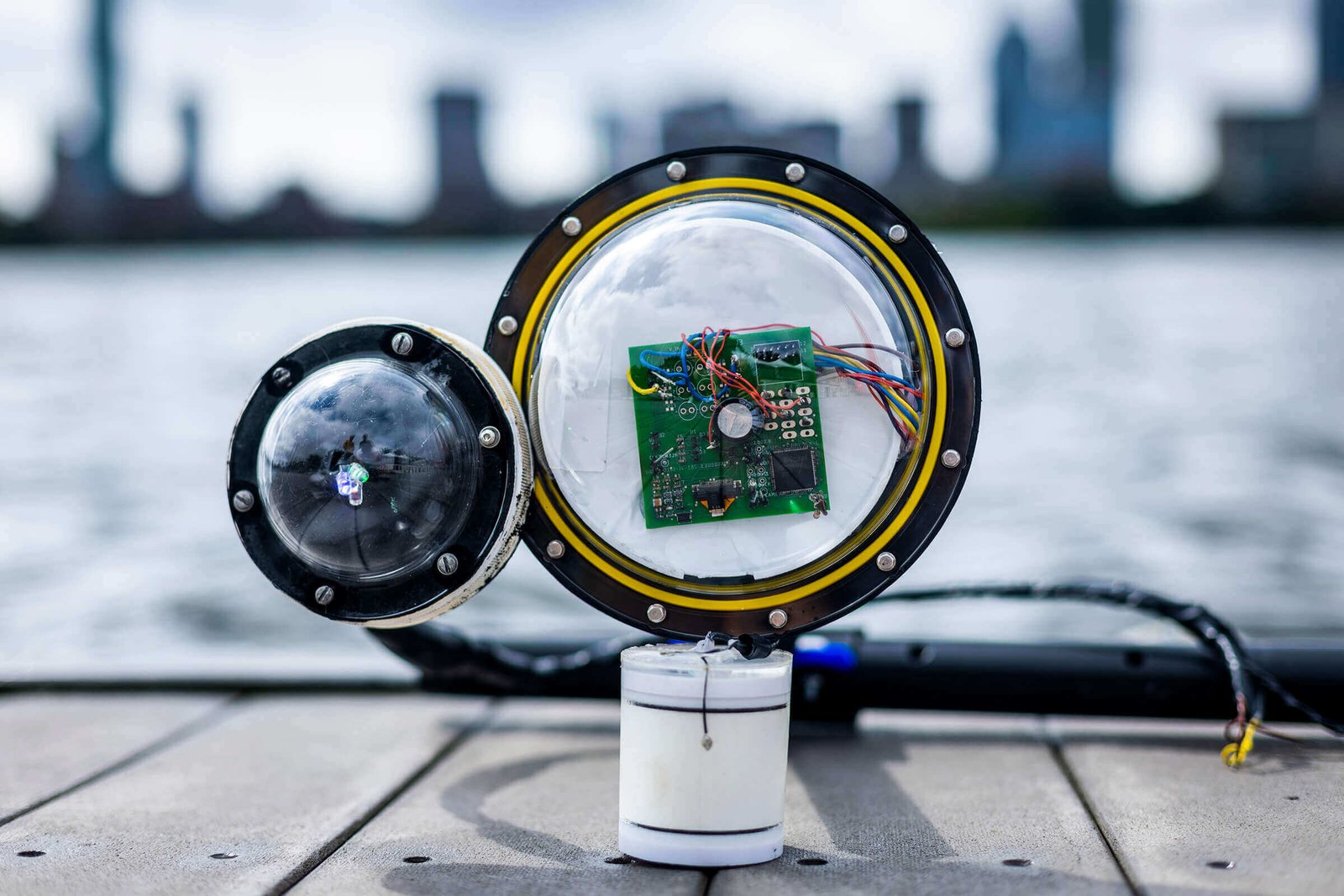They build a wireless and battery-free underwater camera that works with sound

A group of MIT researchers has developed a wireless underwater camera that works without batteries. The device converts sound into electrical energy. It is about 100,000 times more energy efficient than other underwater cameras.
The underwater camera devised by MIT engineers requires no cables or batteries, works with sound and takes color photos , even in the darkness of the depths. In addition, it is about 100,000 times more energy efficient than other underwater cameras.
Exploring unknown regions of the ocean is no easy task. So much so that it is estimated that we have not observed more than 95% of the Earth’s oceans , that is, we know less about our planet’s oceans than about the far side of the Moon or the surface of Mars .
Part of the reason for this lack of knowledge is that running an underwater camera for a long time is very expensive . It has to be tethered to a research vessel or sent to a ship to recharge its batteries. Well, the new wireless and battery-free underwater camera could change things.
The autonomous camera works with sound. It converts the mechanical energy of sound waves traveling through water into electrical energy that powers your imaging and communications equipment. After capturing and encoding the image data, the camera also uses sound waves to transmit the data to a receiver that reconstructs the image
Because it doesn’t need a power source, the camera could run for weeks , allowing scientists to search for new species in remote parts of the ocean, capture images of ocean pollution , or monitor the health and growth of aquaculture -raised fish. .
“One of the most interesting applications of this camera for me personally is in the context of climate monitoring . We are building climate models, but we are missing data for over 95% of the ocean. This technology could help us build more accurate climate models.” and to better understand the impact of climate change on the underwater world,” says Fadel Adib, associate professor in the Department of Electrical and Computer Engineering and director of the Signal Kinetics group at the MIT Media Laboratory, and lead author of the paper.
How sound is converted into electrical energy
In order for the camera to be autonomous for long periods of time, the researchers needed it to be able to collect energy by itself while in the water and also consume little.
The camera takes energy through transducers placed on the outside that are made of piezoelectric materials. These materials produce an electrical signal when a mechanical force is applied to them. In this way, when a sound wave traveling through the water collides with the transducers, they vibrate and convert that mechanical energy into electrical energy.
Sound waves can come from marine life itself or from a ship passing through the area. The camera stores the energy it has harvested until it accumulates enough to power the electronic components responsible for taking the photos and communicating the data.
To make the camera power-efficient, the researchers used ultra-low-power image sensors. The problem is that these sensors only capture gray images. In addition, since most underwater areas lack light, they had to develop a flash, also with low consumption. They solved both difficulties by using red, green, and blue LED lights . When the camera captures an image, it shines a red LED and then uses the image sensors to take the photo. Repeat the same process with the green and blue LEDs. Although the image appears black and white, red, green, and blue light reflects off the white portion of each photo. In this way, when the image data is combined in post-processing, it can be reconstructed in color.
Researchers have tested the camera in various underwater environments with satisfactory results . In the New Hampshire pond, they captured color photos of floating plastic bottles . They also took such high-quality snapshots of a starfish that the spines on its arms were clearly visible. The device also worked when they used it to take, for a week, photographs of a plant that lives in a dark area to document how it grew.
The next step is to increase the memory of the camera so that you can take photos in real time , transmit images or even record videos underwater. For now, the camera transmits data up to 40 meters from the receiver. Another goal will be to increase that range so it can be used in more underwater environments.






